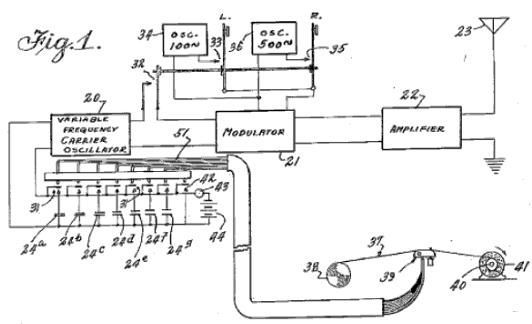Reginald Victor Jones (or R. V. Jones) was born one hundred years ago today, on September 29, 1911. Jones was a British physicist who pioneered scientific intelligence, the art of applying scientific analysis to military intelligence. Part Richard Feynman, part Sherlock Holmes, Jones’ job was to anticipate German technical advances and determine appropriate responses and countermeasures.
In November 1939, a British Naval Attache received a mysterious communication that came to be know as the “Oslo Report.” The Oslo Report purported to describe a variety of secret German weapons in development. Dismissed as “too good to be true” by many of his colleagues, Jones recognized early on the insights the Oslo Report provided into German research and development. After the war, Jones commented that when his other duties happened to slow down, he’d pick up the Oslo Report just to see what might be coming next.
Jones spurred the British to victory in what came known as the “Battle of the Beams,” a secret adjunct to the air battle fought over England in the summer and fall of 1940. Jones correctly recognized that the Germans employed highly precise radio direction beams to guide their night bombers to targets over England. Using the insights from the Oslo Report, Jones helped identify and jam these and other German navigational signals. Jones anticipated and developed counters to each German advance. In one case, Jones actually had countermeasures ready even before the first German deployment of the system. An absolutely outstanding documentary on the Battle of the Beams is available online:
Working with sources including RAF photo-reconnaissance and Enigma intercepts, Jones identified the latest German radar, Würzberg, deployed on an exposed cliff near Bruneval, France. Jones’ conclusions were instrumental in targeting the installation in the Bruneval raid. Yet another documentary on that operation is available on YouTube:
As early as June 1937, Jones devised the idea of obscuring radar detection by dropping resonant lengths of foil to reflect radar waves and create false returns. This idea, called Window by the British and “chaff” by the Americans, was finally used with devastating effect in the June 1943 bombing of Hamburg. Ironically, both the British and the Germans independently developed chaff and both sides refrained from using it for over a year out of fear that the other side would learn the trick and reciprocate.
Jones also sounded the alarm on German developments in rocketry, correctly predicting the deployment of both the V1 and V2. He was also a pioneer in Time Difference of Arrival, contributing to the GEE radio-navigation system that evolved into LORAN.
Why was Jones so successful where others, more accomplished in their particular fields, were unable to correctly interpret the same raw intelligence? Jones has an insightful explanation in his memoir, Most Secret War:
Plausible as it seems, the scientific experts in one country are not necessarily as good at assessing evidence as independent intelligence officers. It may happen for some reason that they have not developed a particular weapon either because they have not thought of it or, more likely, they have thought of it but have done some careless work which has led them to a wrong conclusion and have therefore decided that the development is not feasible. What sometimes happens is that a man thinks of an idea and tries it before the time is really ripe, and so he fails. He then invents a reason for his failure which overlooks his own deficiencies and blames instead the operation of some fundamental law. Thus, there was a doctrine that radio wavelengths of the order of 10cm could not be generated by electronic valves because the time taken by electrons to pass through the valve was much too great. This argument was fallacious, but was accepted by many scientists and engineers because we had become almost congenitally inclined to accept such ‘postulates of impotence’ in basic science. For example, the idea that you cannot send a signal with a greater speed than that of light led to the theory of relativity, with its amazingly fruitful results. The scientist is rather like Robert of Sicily in Longfellow’s poem about the battle between Robert and the Angel. Once Robert was prepared to submit, the Angel gave him all he wanted. And if the scientist is humble enough to admit that there are some things nature will not allow him to do, whole fields of science then become intelligible. Encouraged by the success of humility, he is therefore conditioned to look for the basic reasons why something cannot be done.
Jones’ Most Secret War presents an engrossing memoir of his wartime experience. I highly recommend it. For additional information:
- Robert Buderi’s The Invention that Changed the World: How a Small Group of Radar Pioneers Won the Second World War and Launched a Technical Revolution provides an informative if sometimes hyperbolic overview of radar and its role in WWII.
- Anthony Cave Brown’s Bodyguard of Lies: The Extraordinary True Story Behind D-Day is a fascinating history of the use of deception in World War II in general, not just surrounding the Normandy invasion.
- I particularly recommend Greg Goebel’s The Wizard War: WW2 & The Origins of Radar. Available online, Goebel’s work provides an excellent and comprehensive summary of radar, electronic warfare, and radio navigation in WWII.




One thought on “Remembering R. V. Jones, Electromagnetic Warfare Pioneer”